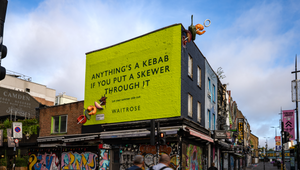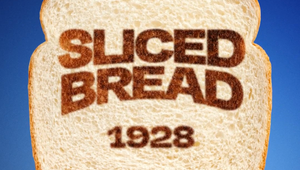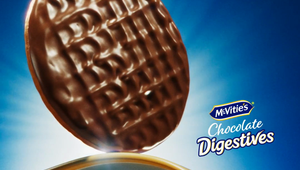
A Chance to be Anything but Dull: How Humour Resonates with Audiences Returning to OOH

This recent article about humorous ad creative around the Covid-19 pandemic, got us thinking about how out of home ads have not been shy in calling out a satirical side to the lockdown. Although humour during a crisis can sometimes go down like a lead balloon, we’ve noticed a few OOH campaigns that have executed this brilliantly and used the channel to the maximum to brighten up a miserable time for some.
For the majority of 2020, it’s been tough. But being British, we’ve always got our sense of humour. We've all heard the famous phrase that “laughter is the best medicine.” Scientifically this is true. This is because when we laugh, we release endorphins (happy chemicals) within our brains. When we’re in a social setting and laughing with others, the spread of this endorphin release promotes a sense of togetherness and safety. Laughter is also proven to increase immune cells and infection-fighting antibodies, which in turn improves our resistance to disease.
Historically, during the Great Depression and the first and second World Wars, humour became the tonic that often kept up the morale of the people during these dark times. From curated correspondence between soldiers and families, “dark humour” was a common way to cope with being on the frontline. This period also saw the rise of great comedy legends and a whole range of humorous cartoons published in newspapers.
In OOH we’ve learned that contextually relevant humour can really go a long way and can help with brand-building and changing consumer mindsets. Here are a few of the great OOH campaigns we’ve seen at Talon that’ll really get y-OOH laughing!
Bumble

With 1 in 5 relationships starting online, dating apps have become the hook for easily browsing through the “plenty of fish in the sea." However, with lockdown restrictions quickly turning the water stagnant, finding a catch was the least of everyone’s worries. So, when restrictions were eased, Bumble made sure that they were at the forefront of dater’s minds by announcing that “season 2 of 2020 is about to begin.”
Taking recent circumstances into consideration, Bumble’s campaign was contextually relevant and downright funny. Dominating premium sites as well as various other small formats, Bumble really made a long-lasting statement with this campaign, as well as a great first impression.
HUN Wine

Due to launch their new vegan, fair-trade wine-in-a-can product at multiple UK festivals this Summer, HUN Wine had to quickly re-think its launch. With a target audience of trendy twenty something festival goers rapidly declining in OOH, this really corked their campaign. But going quiet during lockdown was never an option for this on-trend brand. Instead of pulling their campaign they decided to buck the trend and work with Talon to use OOH as their launch platform.
Armed with their tongue-in-cheek humour and our intelligent data planning tool Ada, HUN totally reimagined their campaign. With contextually relevant creative mocking their decision to use OOH in lockdown, the campaign was executed across areas of London where their young and trendy festival goers lived. This created a PR splash and was shared online. With their humorously relatable messaging, we expect HUN to age like fine wine!
Ecover

I think we can all relate to the fact that 2020 so far has been poop – particularly with the surprising war for toilet roll at the beginning of lockdown! So, when Ecover launched an initiative to help fund sustainable start-ups from getting lost in the aftermath of Covid-19, their campaign really turned some heads. The contextually relevant campaign perfectly combined poop humour and some much-needed optimism, without leaving a stench.
Emily Snacks

Usually in London, we’re shooing pigeons away by the hundreds (especially if we’re snacking on crisps as nice as these). But with lockdown rendering a usually busy London a ghost town, desperate times called for desperate measures. One lucky pigeon actually became a main part of this humorous campaign for snack brand Emily.
Due to launch its product during a busy bank holiday, the brand was left with empty streets and a quickly outdated campaign. But instead of postponing the campaign, the brand decided to take a far more humorous and, in our opinion, genius approach to its misfortune. When things go wrong, we often take the self-depreciating route to cheer us up which is why it was refreshing and relatable to see a brand take this human route too. It was a huge risk to mock the medium but, in this case, it paid off. Although only few were lucky enough to see the campaign in person, it was well-received online and achieved more of an impact than the brand could ever have imagined.
I hope that this article has cheered you up as much as these campaigns have their audiences. Humour, when used contextually and executed right, can set your brand apart from the crowd and create messaging that is remembered as audiences go about their day. As demonstrated in the campaigns above, the pandemic has given OOH a much-needed cultural reset to be anything but dull.
This is the time for brands to reinvent their creative and make the comeback of all comebacks with light-hearted humour that will resonate with audiences. When brands don’t always take themselves seriously, they appear more human and therefore relatable. In these darker times, relatable messaging is safe and reassuring and like Lucky Generals, Andy Nairn said, “Now that we’re slowly moving into a ‘new normal’ phase, there’s no excuse for vanilla.”
Charlotte Jones is digital marketing executive at Talon















